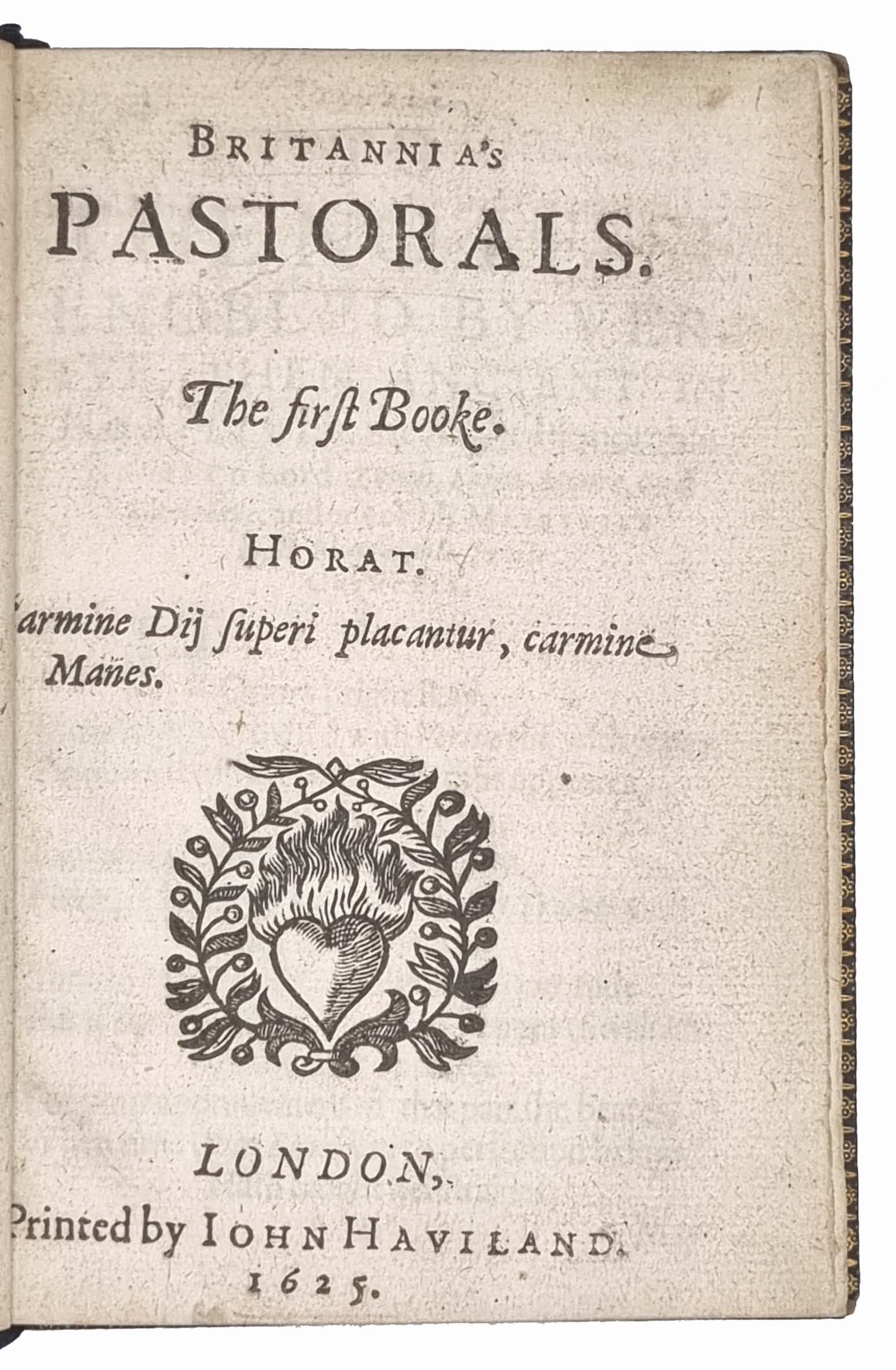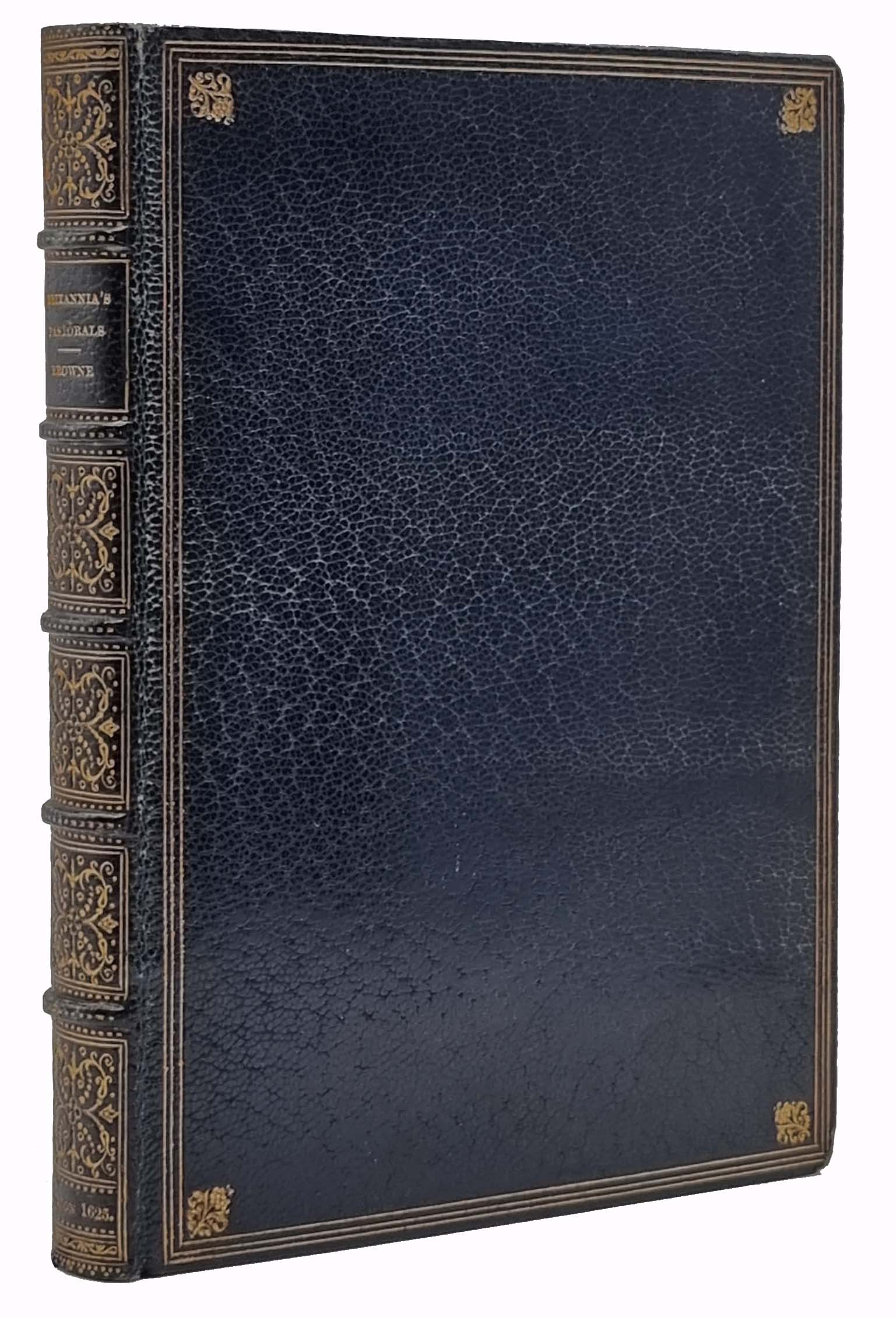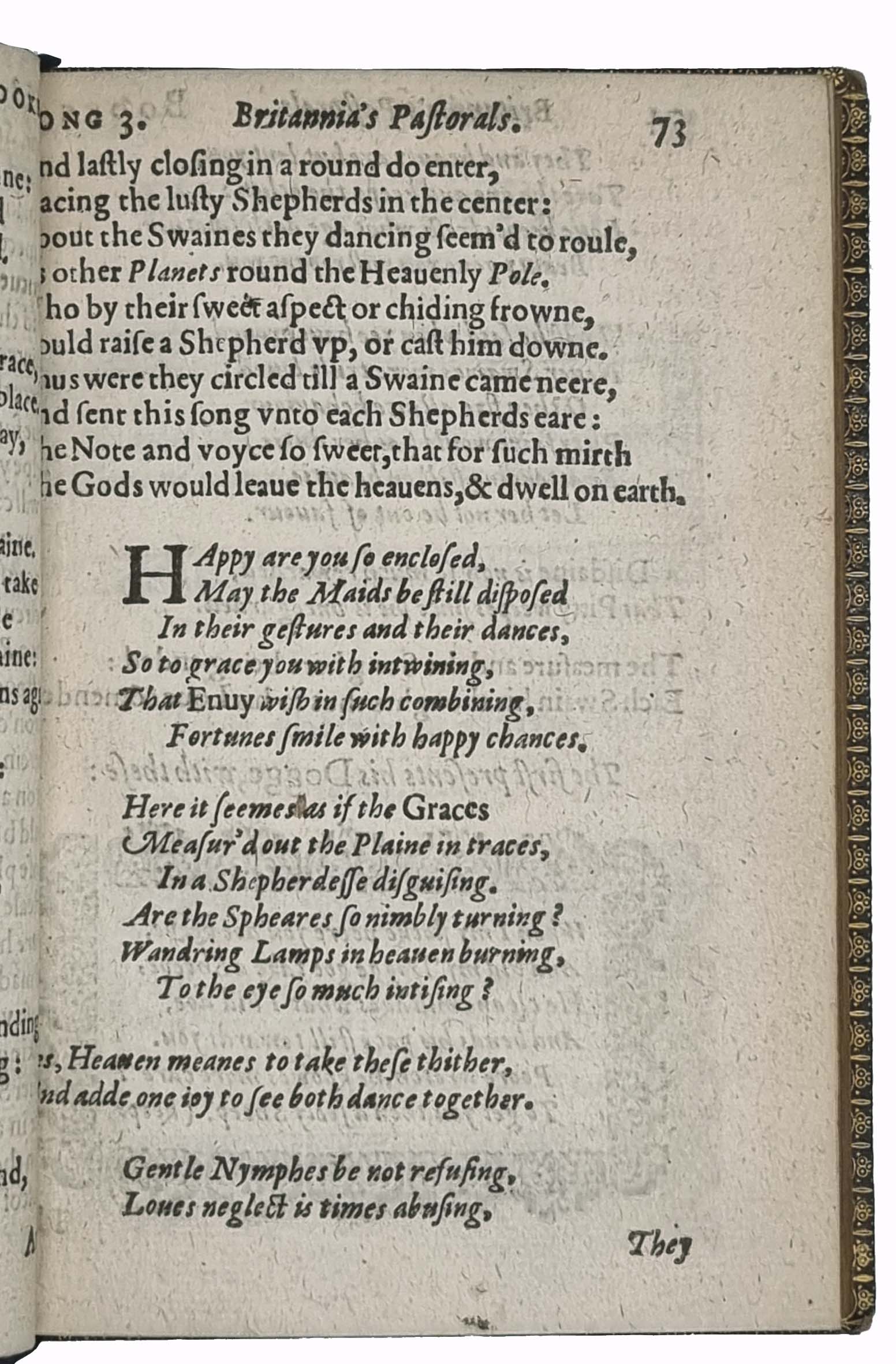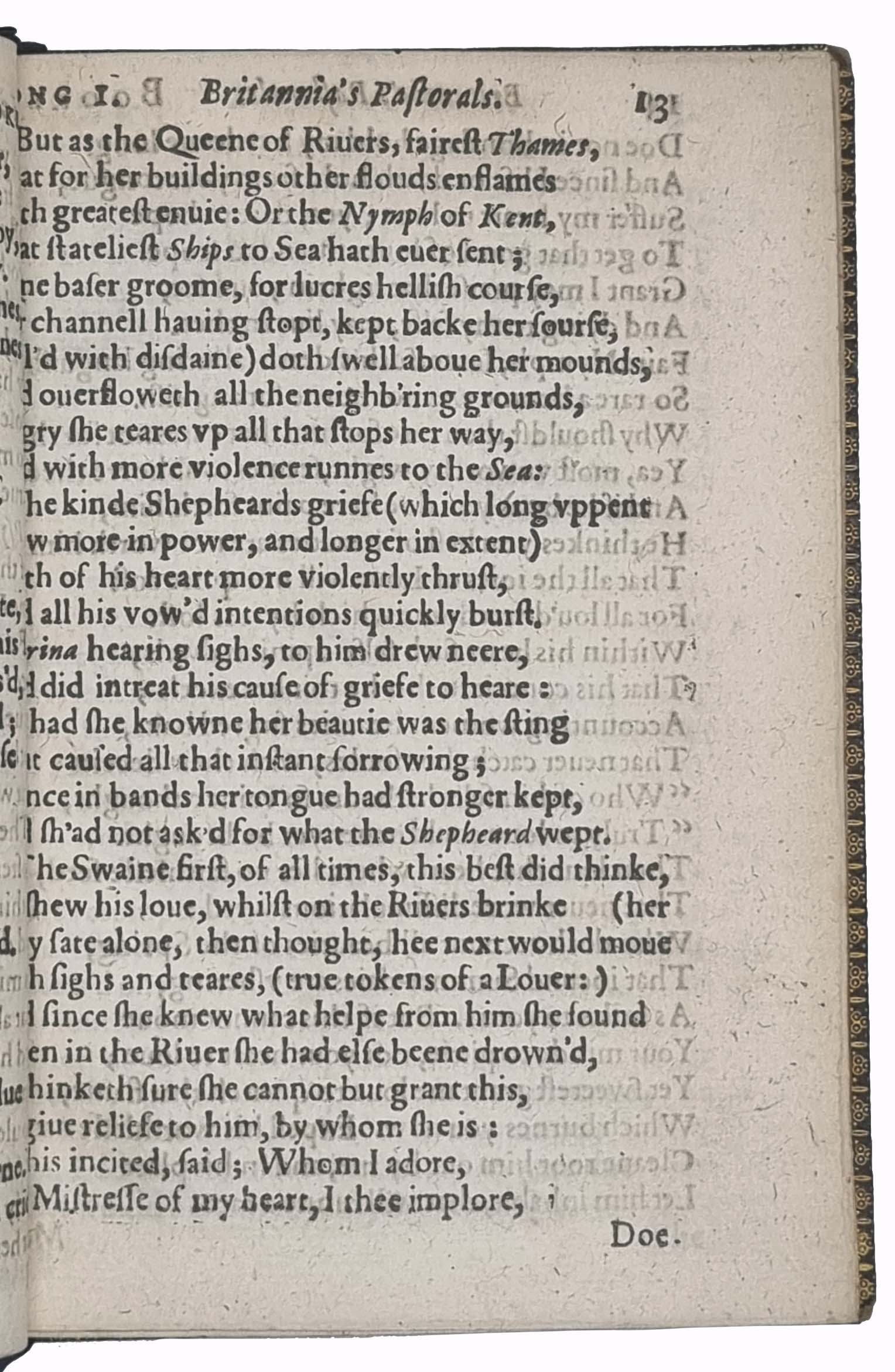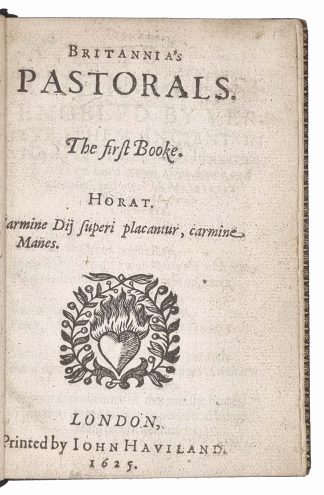[BROWNE, William]
Britannia’s pastorals. The first booke.
London, by Iohn Hauiland, 1635£4,500.00
FIRST EDITON thus. Two vols. in one. 8vo. pp. [xvi], 140 [i.e. 142], [xiv], 179, [i]. A-Y . “Variant 1: (second) title page is a cancel, with ‘Haviland’ in the imprint.” ESTC. Roman letter, some Italic and Greek. Woodcut printer’s device on first title, two woodcuts in text of first vol., ‘arguments’ within typographical borders, woodcut initials, grotesque woodcut head-piece, typographical ornaments, bookplate of the Fox Pointe collection on pastedown, bibliographical note in C19th hand on fly. Light age yellowing, the odd marginal spot, fore-edge margins cut a little close just shaving sidenote in a few places, very expert repair to blank margins of L7+8. A very good, clean copy in fine late C19th dark blue crushed morocco by Stikeman, covers bordered with a triple gilt rule, small fleurons gilt at corners, spine with gilt ruled raised bands richly gilt in compartments with small scrolled and pointillé tools, edges gilt ruled, inner dentelles richly gilt, a.e.g. corners a little worn, extremities fractionally rubbed.
A very good copy, finely bound by Stikeman of New York, of the first complete edition of Browne’s best-known pastoral poem. Britannia’s Pastorals is a pastoral romance in which William Browne presents the adventures of Marina, Fida, and Aletheia in five “songs” with an interpolated elegy for Prince Henry. Walter Greg describes Browne’s major works as “the longest and most ambitious poem ever composed on a pastoral theme” ‘Pastoral Poetry and Pastoral Drama.’ The commendatory verses by John Selden, Michael Drayton, Edward Heyward, Christopher Brook, Fr. Dynne, Thomas Gardiner, W. Ferrar, and Fr. Oulde acknowledge Browne of Tavistock as a second Colin Clout.
“Edmund Spenser was Browne’s poetic model throughout his career, most obviously in Britania’s pastorals, although he was influenced by Italian pastoral drama (specifically by Torquato Tasso’s Aminta). In Britannia’s pastorals, Browne mixes the pastoral and romantic genres, as Spenser did in the Faerie Queene, and, like Spenser, Browne attempts to write an epic that will be thoroughly English. …His greatest quality was probably his talent for natural description . The passages in which he describes what is recognizably his native Devonshire are especially fine. …In his own lifetime Browne was considered an important English poet, but his fame did not last. Still, it has often been argued that not only Milton but also such later poets as Keats, Tennyson, and Elizabeth Barrett Browning were influenced by his work, and in particular his treatment of nature.” The Encyclopedia of English Renaissance Literature. “Britannia’s pastorals may be the most elaborate attempt ever made to imitate ‘The Faerie Queene’ with respect to atmosphere of romance, general structure, and interlacing of many subplots. .. ‘Britannia’s Pastorals’ embodies a genuinely Spenserian tradition: intricate romance narrative in an idealised setting, passing at times into open allegory, reaching out towards moral concerns on the one hand and politics, society, literature and culture on the other.” Albert Charles Hamilton. ‘The Spenser Encyclopedia.’
A rare copy, finely bound, of the first complete edition of this important work of English pastoral poetry.
STC 3916. ESTC S105932. Lowndes I 292. Not in Pforzheimer.In stock


